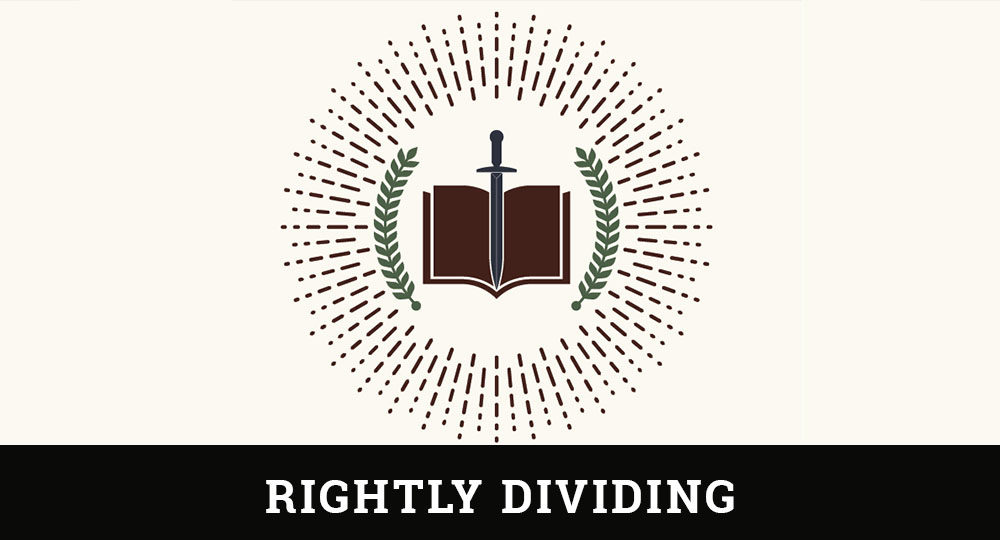A Nation in Decline
Editor’s note: We are pleased to announce that this article is the first in a new series on the Book of Hosea by David Levy.
“It was the best of times, it was the worst of times; it was the age of wisdom, it was the age of foolishness; it was the epoch of belief, it was the epoch of incredulity; it was the season of Light, it was the season of Darkness,” wrote Charles Dickens in his Tale of Two Cities. Dickens’ immortal words depicted Paris during the French Revolution. They could also be used to depict Israel in the eighth century B.C.
History of Immorality
It was the best of times. Jeroboam II (782–753 B.C.) had enjoyed a period of military success, restoring “the border of Israel from the entering of Hamath unto the sea of the Arabah [Dead Sea]” (2 Ki. 14:25). Israel was experiencing peace, prosperity, and a proliferation of produce. New temples and fortified cities (Hos. 8:14) were being built throughout the land.
On the other hand, it was the worst of times. With prosperity came a major decline in the religious, moral, and social order. Seeds of discord were sown when Jeroboam I (931–910 B.C.) rebelled against the rule of King Rehoboam of Judah (931–913 B.C.), declaring himself king over the ten tribes that became known as the Northern Kingdom of Israel. He instituted sweeping changes in the worship of Israel by building temples at Bethel and Dan to divert the people from returning to Jerusalem to worship. He erected images of a golden calf in the temples at Bethel and Dan, which would later be worshiped.
Spiritual conditions worsened when Ahab (874–853 B.C.) married Jezebel. With their marriage, Baal worship was introduced into the land and was immediately adopted by Israel. Such practices as religious prostitution, fertility rites, and the building of high places for image worship flooded Israel. Chambers and wooded areas were reserved for the sacred prostitution associated with the worship—male prostitutes being consecrated to Ashtoreth and sacred harlots dedicated to Baal (4:14; cp. 1 Ki. 14:23–24) [Frederick A. Tatford, The Minor Prophets, vol. 1, p. 11]. The people became victims of two false religions: calf worship introduced by Jeroboam I at Bethel and Dan, and Baal worship established by Ahab and Jezebel.
Israel’s religious decline led to a rapid deterioration in its moral and social order. The leaders had accumulated wealth by corrupt business practices, by perverted justice, bribery, robbery of the poor, and exploitation of widows and orphans. There was total compromise—from the courtroom to the bedroom. Justice was determined by the highest bribe, whereas faithfulness in word and deed was extinct. Drunkenness and open harlotry had assumed epidemic proportions. Israel, established by God as a testimony of His standards, had become like its wicked neighbors, blatantly disobeying the laws of God (4:2–3) [H. Ronald Vandermey, Everyman’s Bible Commentary: Hosea, p. 14]. Deterioration in Israel was swift and extensive.
With the death of Jeroboam II, political confusion and anarchy ensued throughout the land. Jeroboam’s son, Zechariah, was assassinated by Shallum after reigning for only six months. Shallum was assassinated by Menahem after reigning for only one month. Menahem (752–732 B.C.) reigned for ten years. During that time, Assyria’s Tiglath-pileser III (745–727 B.C.) invaded Israel, extorted tribute from the nation, and made it a vassal state. Menahem’s son, Pekahiah (742–740 B.C.), reigned for two years and was then assassinated by Pekah (740–732 B.C.). Pekah made an alliance with Syria against the Southern Kingdom of Judah. The Assyrians rallied in defense of Judah and captured Israel (732 B.C.). Hoshea (732–722 B.C.) assassinated Pekah and became king over Israel. With the death of Tiglath-pileser (727 B.C.), Hoshea stopped paying tribute to Assyria. An enraged Assyria invaded Israel, and after a three-year siege by Sargon II, Samaria fell in 722 B.C. (2 Ki. 17:5–6). Sargon deported 27,900 Israelites to the upper Tigris-Euphrates Valley and repopulated the area with Gentiles.
Hosea’s Integrity
Out of Israel’s depravity emerged the young prophet Hosea. He was a man of integrity, well-educated, from the cultured class of Israelite society. All that is known about Hosea is recorded in the book bearing his name. His father’s name was Beeri (v. 1), but no reliable information is given on his tribal identity, birthplace, early life, or occupation. His name means salvation or deliverance and is derived from the same Hebrew noun that forms the names Joshua, Isaiah, and Jesus. Ironically, Hosea was also the name of Israel’s last king, Hoshea. Hosea was a contemporary of Amos, Isaiah, and Micah. Like these men, he was raised up by the Lord to rebuke Israel and call the nation to repentance and reconciliation with God.
Hosea prophesied “in the days of Uzziah, Jotham, Ahaz, and Hezekiah, kings of Judah, and in the days of Jeroboam, the son of Joash, king of Israel” (1:1). He ministered during the time of the Judean kings mentioned (791–687 B.C.) and seven kings of Israel (793–722 B.C.). Although scholars differ on the exact date Hosea began his ministry, he probably started around 750 B.C. and concluded sometime during the reign of Hezekiah (715–686 B.C.). It is not known why Hosea mentioned the four kings of Judah but omitted the six kings of Israel who followed Jeroboam II. Perhaps it suggests the legitimacy of the Davidic dynasty (cp. 3:5), in contrast with the instability and illegitimacy of the kingship in Israel (Robert B. Chisholm, Jr., “Hosea,” The Bible Knowledge Commentary, by Walvoord and Zuck, p. 1379).
The prophet’s language is full of emotion and vivid expressions, rich with metaphors and similes, and replete with illustrations reinforcing the impact of his words. His frequent use of a play on words, cryptic allusions, and subtle innuendoes provides fervor for his prophecy. Hosea’s language soars into flights of poetry and descends into the pathos of grief, only to revert once more to forceful and logical arguments against Israel’s sin.
Harlotry in Israel
Hosea received a strange command. “And the Lord said to Hosea, Go, take unto thee a wife of harlotry and children of harlotry; for the land hath committed great harlotry, departing from the Lord” (v. 2). The Lord’s command must have startled and perplexed the prophet. Was God commanding him to commit an act of adultery, something He had earlier condemned (Ex. 20:14)? It is doubtful that God would do such a thing. Some scholars try to sidestep the moral problem of the infidelity of Hosea’s wife, Gomer, by interpreting the verse as a vision, a parable, or an allegory used to illustrate Israel’s relationship with God. Hosea, however, gave no indication that this account should be interpreted in such a way. The Book of Hosea is a written narrative—not a vision, a parable, or an allegory—and should be interpreted literally.
Although the text is to be interpreted literally, that does not mean that Gomer was a harlot at the time she married Hosea. The following reasons bear this out.
- Hosea wrote the text years after his marriage, which gave Gomer time to become unfaithful.
- A righteous prophet like Hosea would never be instructed to marry a harlot.
- If a woman was found to be a harlot before marriage, she was to be killed by stoning (Dt. 22:20–21).
- Gomer was a virgin before marriage, but God, in His foreknowledge, knew that she would be unfaithful to her wedding vows.
- The command, “Go, take unto thee a wife” (v. 2) is a figure of speech known as a zeugma. This occurs when one verb is joined to two or more nouns but refers to only one of them. In this case, the zeugma involves the double verbs, Go, take unto thee, a Hebrew idiom for get married. God was saying to Hosea, Go, take a wife who will prove to be unfaithful (Walter C. Kaiser, Jr., Hard Sayings of the Old Testament, p. 323). Hosea was to marry a woman with a propensity for sexual promiscuity. Thus, the words are to be understood as stated in anticipation of her yet-to-be revealed promiscuity.
- It is clear from Hosea 4:11–19 that God strongly condemns physical and spiritual harlotry.
- In chapter 3, Hosea took Gomer back after she had been rejected for becoming a harlot. Such a rejection was not justifiable if Hosea was already married to a harlot.
Hosea’s tragic marriage to Gomer would serve as a living example of God’s covenant relationship to Israel. God is explicitly portrayed throughout Scripture as a husband to the nation of Israel. Israel was unfaithful to God by sharing its love with the gods of Baal. Hosea’s own heartache as a betrayed husband provides an example of God’s heartache over Israel’s violation of its covenant relationship with Him.
God is portrayed in chapter 1 as withdrawing His love from Israel in the face of its pursuit of other lovers, such as Baal. Hosea’s ministry was to describe God’s indictment against Israel as spiritual adultery and to warn the nation that if repentance was not forthcoming, it would reap a whirlwind of judgment from the Lord.






